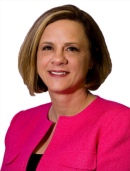
Strategies for Reducing Emergency Department Overuse
Access to healthcare through the emergency department presents an avenue for people not necessarily suffering from the life- and limb-threatening conditions such departments are designed to address. Overuse leads to needless expense, crowding and reductions in access to those in true need. Several entities have come up with suggestions to reduce inappropriate ED visits.

Robert Wah, MD, suggested care integration might positively affect ED usage.
“In many people’s eyes, the emergency system is seen as a safety valve, a way to cover gaps in whatever system we are using,” said Robert Wah, MD, chief medical officer of CSC, based in Falls Church, Va.
Emergency department overuse occurs because many patients don’t have or are not aware of other options, explained Robin Shannon, RN, director of performance solutions at T-System Inc. in Dallas.
“Treating patients with stable, chronic and low-acuity conditions in the ED is a problem, because it is not the best care setting for those conditions; and it contributes to unnecessary overcrowding,” Shannon said. “Moreover, patients who don’t receive ongoing care in the proper setting for chronic conditions end up sicker and require more frequent hospitalization.”
Patients without an established primary care physician, patients without insurance and safety net patients often seek care in the emergency department instead of in a more appropriate care setting for their condition, Shannon added.
“In order to have the best clinical outcome for the patient and the best financial outcome for the hospital, effective care coordination is critical,” Shannon said. “Solutions with a focus on communication, proactive transitions and collaboration are reducing overuse of the ED.”
Technology
New technologies can play a big part in reducing inappropriate ED visits.
Wah suggested care integration might positively affect ED usage. He said other industries have used technology to pull data from various sources in enterprise resource planning systems, but healthcare has been slow to implement those integrated systems. He expects an enterprise system will contribute to integrated care, analytics and other benefits. CSC has deployed such systems for other industries.
Patients also can become more involved with their health through telemedicine consults. Wah said those services may replace some emergency department visits.

Robin Shannon, RN, said she has found face-to-face encounters more successful than following up with a patient through phone or email after discharge.
For patients without a primary care provider, Shannon said, a proactive transition process is critical. The ED should identify physicians accepting new patients and connect the patent and provider prior to discharge from the ED. She also recommended case managers talk to patients about the importance of ongoing care and alternate care settings that may be able to provide more effective treatment for their condition. T-System’s Care Continuity™ uses algorithms to identify high-risk patients, such as those without a primary care provider and with multiple ED visits, and provides an automated, real-time notification to case managers who can then intervene immediately.
For patients with an established relationship with a primary care provider, better communication between the hospital and the primary care physician can result in fewer return visits to the ED, Shannon said.
“An effective solution should provide ongoing notifications to the primary care physicians of their patient’s status in the ED, as well as easy access to the patient’s medical record to reduce duplicate testing and improve continuity of care,” Shannon added.
A focused effort to reduce revisits, such as tracking frequent ED patients, contacting the primary care provider while the patient is in the ED and disseminating educational materials about appropriate settings for health care, has worked well for Washington State, reducing ED visits by frequent Medicaid users by 23 percent during the program’s first six months, with an annualized savings of $31 million for the state.
Care coordination
What can hospitals do about patients who are essentially “super users” of the emergency department?
An emergency room (ER) diversion project at St. Charles Medical Center in Bend, Ore., reduced by 49 percent the number of ED visits by 144 people who had used the department for care at least 10 times in the prior year. This reduced costs by an average of more than $3,100 per patient. The program employs a nonclinical community health worker who talks with patients and helps them navigate the healthcare system. Many of the frequent ED users had a history of emotional, physical or sexual trauma, and half had untreated behavioral health needs, according to the Oregon Health Authority.
A May 2014 study from the Henry Ford Hospital in Detroit, presented at the Society for Academic Emergency Medicine annual meeting last week, found that 77 percent of patients who sought care in the ED at least 10 times per year had a substance-abuse addiction.

Jennifer Peltzer-Jones, RN, PsyD, called the number of patients seeking narcotics in the ED alarming.
“Emergency departments cannot address the super-frequent users problem without addressing the underlying reason they’re here--their substance abuse problem,” says Jennifer Peltzer-Jones, RN, PsyD, a clinical psychologist at Henry Ford’s department of emergency medicine and the study’s lead author.
“As our study showed, the number of frequent users visiting the ED for narcotics is alarming,” Peltzer-Jones added. “A successful remedy to curtailing that problem is implementing case management strategies such as ours. However, if emergency departments don't have the resources to create a program, instituting narcotic prescribing guidelines may lead to decreased visits by frequent users.”
A study of frequent ED users at the University of Florida in Gainesville reported similar results: 76 percent of patients with eight or more ED visits in the prior year had a current or past substance abuse problem. The results were presented at the annual spring meeting of the Society of Teachers of Family Medicine.
The university’s medical center has experienced reductions in hospital resources used to treat emergency patients since establishing a clinic-based multidisciplinary team, according to the presentation by Deepa Borde, MD.
Borde and her team identified 473 patients who visited the UF Health ED more than eight times in the prior year and asked them to visit a multidisciplinary clinic to help identify factors that promote high ED utilization. Preliminary findings demonstrated a 40 percent reduction in ED visits, comparing six months before with six months after the first clinic appointment.
“The goal of our program was to overcome barriers by creating a collaborative safety net consisting of medical services, social services, mental health referrals, pharmacist-conducted patient education, and pain and addiction management,” Borde wrote in the abstract.
As evidence mounts about what works in reducing overutilization of the emergency department, hospitals will likely try similar programs. However, Wah cautioned that he does not yet see clear evidence of which methods work best to reduce inappropriate ED visits.
© 2014. AMN Healthcare, Inc. All Rights Reserved.


